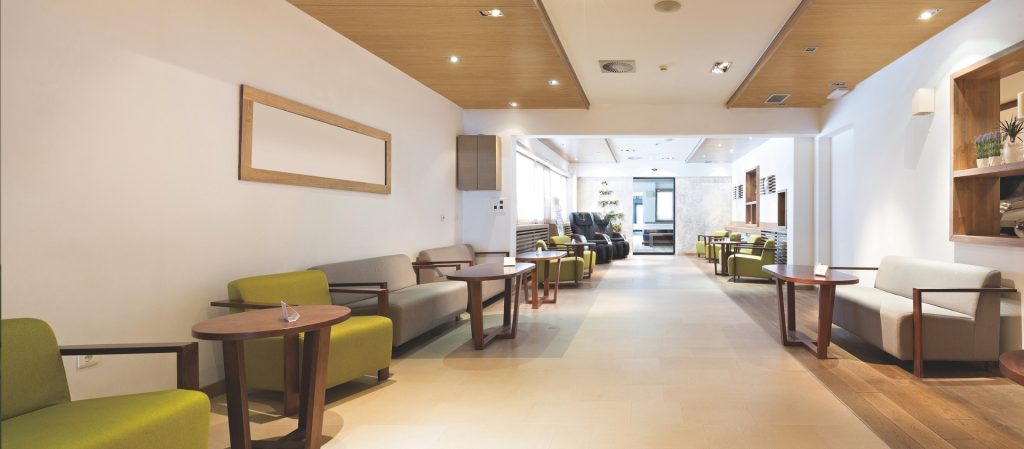Creative Small Office Interior Design: 10 Ideas
Table of Contents
If you’re working with a small office space, it can be a challenge to create a comfortable and functional workspace. But don’t worry, with the right office interior design ideas, you can transform your small space into a productive and stylish environment. Bodaq experts prepared efficient ideas to get you started.
10 Office Interior Design Ideas for Small Space
Here are creative and simple small office interior design ideas to visually expand the space.
Use Light Colors
Light colors can make your office appear larger and brighter. Opt for light shades of white, beige, or pastels for the walls and furniture.
When using light colors in small office interior design, it’s important to consider the following tips:
- Start with a neutral base: Choose a neutral color as the base for your design. White or light gray are good options. This will help to create a clean and fresh look that makes the office feel more spacious.
- Use pastel colors: Light pastel colors such as soft blues, greens, pinks, or yellows can add a pop of color to the space without overwhelming it. These colors are perfect for accent walls, furniture, or decorative items.
- Keep it simple: Avoid using too many colors or patterns in your design. Stick to a simple color scheme and use patterns sparingly. This will help to create a cohesive and streamlined look.
By following these tips, you can create a light and airy small office interior design that feels spacious and inviting.
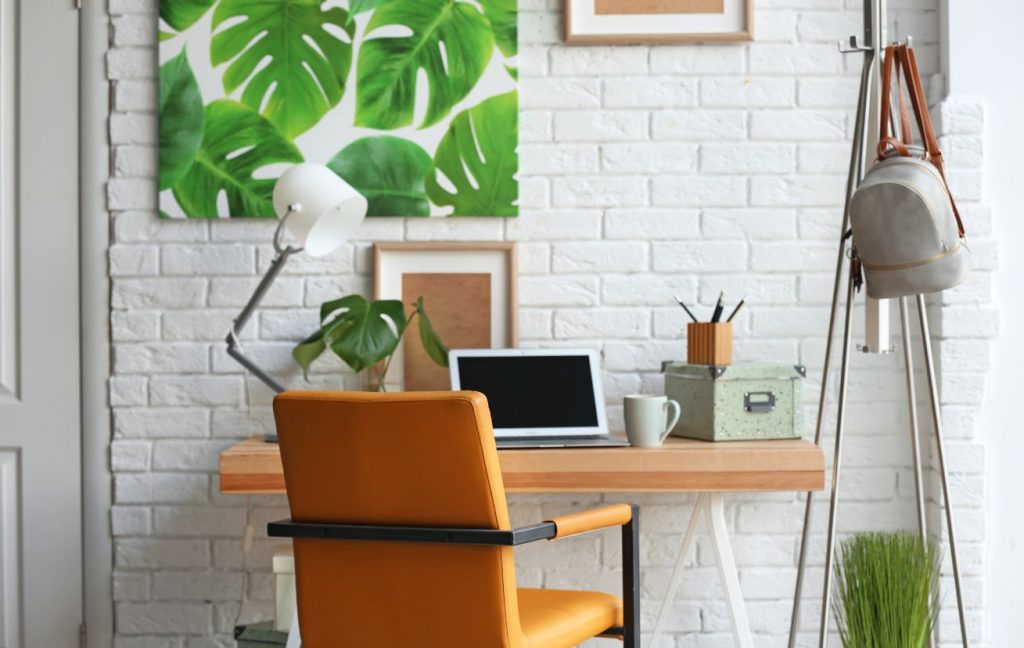
Go for minimalism
A minimalistic design can work wonders in a small space. Keep only the essential furniture and accessories to create an uncluttered workspace.
Minimalism is a design philosophy that emphasizes simplicity, functionality, and the use of only essential elements. This approach is particularly well-suited for small office design, as it can help create a sense of spaciousness and calm in an otherwise crowded or cluttered environment.
To achieve minimalism in small office design, start by decluttering and organizing the space. Remove any unnecessary items or furniture that take up space and distract from the overall design. Keep only the essentials and choose multifunctional pieces that serve more than one purpose, such as a desk that also provides storage.
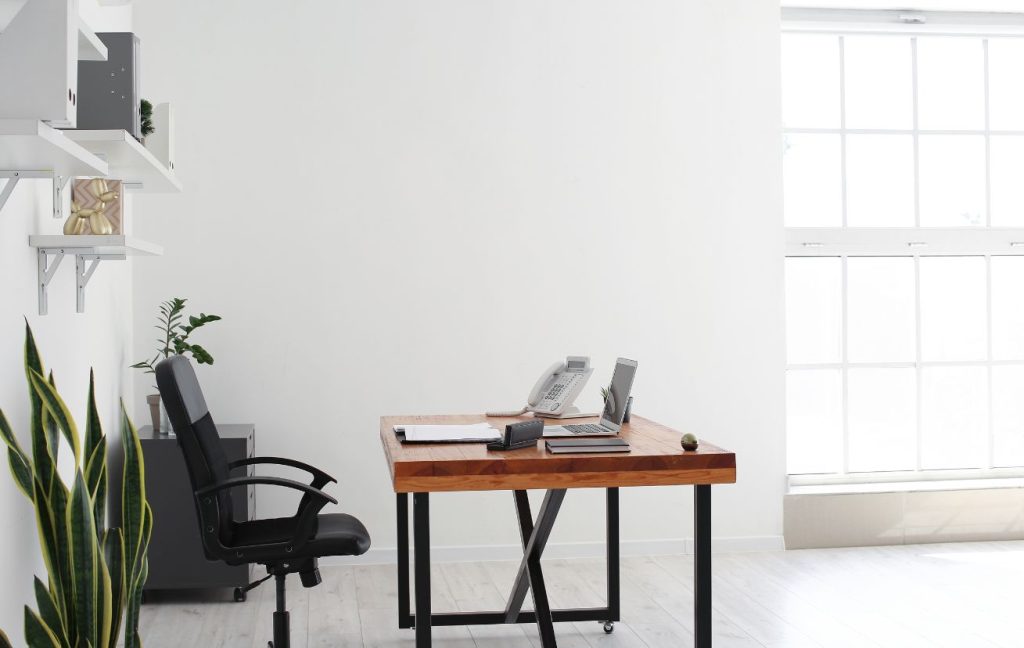
Use multi-functional furniture
Choose furniture pieces that can serve multiple purposes. For example, a storage ottoman can double as a seating option and a place to store your files.
In a small office space, it’s important to make the most of every square inch. One way to do this is by using multi-functional furniture. Here are three examples:
- Desk with built-in storage: A desk with built-in storage is a great way to save space in a small office. Look for a desk with drawers, shelves, or cabinets that can hold office supplies, paperwork, and other items. This eliminates the need for a separate storage unit, freeing up valuable floor space.
- Folding table: A folding table can be a versatile addition to a small office. When not in use, it can be folded up and stored away, freeing up floor space. When needed, it can be unfolded and used as a workspace or meeting table.
- Storage ottoman: A storage ottoman can serve as both a seat and a storage unit. Look for an ottoman with a removable lid that reveals a storage compartment inside. This can be a great place to store extra office supplies or paperwork, while also providing additional seating for guests or clients.
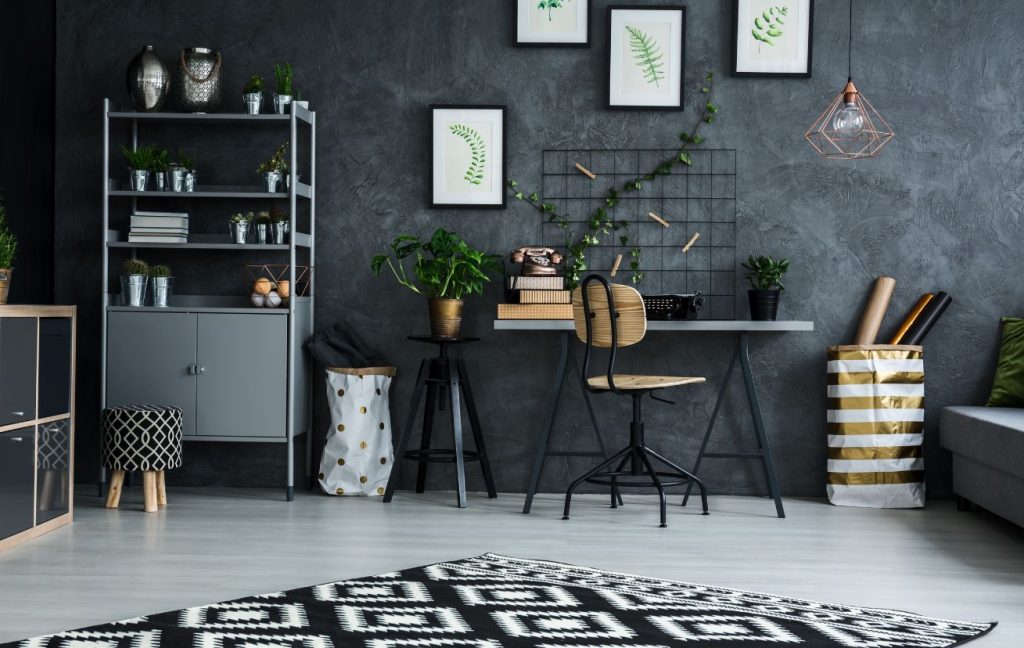
Incorporate natural light
One of the most effective ways to bring natural light into a small office is through the installation of large windows or skylights. By allowing natural light to flood the space, the room appears brighter, more spacious, and inviting.
This, in turn, can increase productivity and create a more positive atmosphere for employees.
In addition to its aesthetic benefits, natural light can also help reduce energy consumption by decreasing the need for artificial lighting. This can lead to a reduction in energy costs and a more sustainable workplace.
When designing a small office, it is essential to consider the placement and size of windows carefully.
Windows that are too small may not provide enough natural light, while those that are too large can create issues with glare and heat. Additionally, the orientation of the building and the position of the windows can impact the amount of natural light that enters the space.
Overall, incorporating natural light in small office interior design can have numerous benefits. From improving employee wellbeing to reducing energy consumption, it is an element that should not be overlooked when designing a workspace.
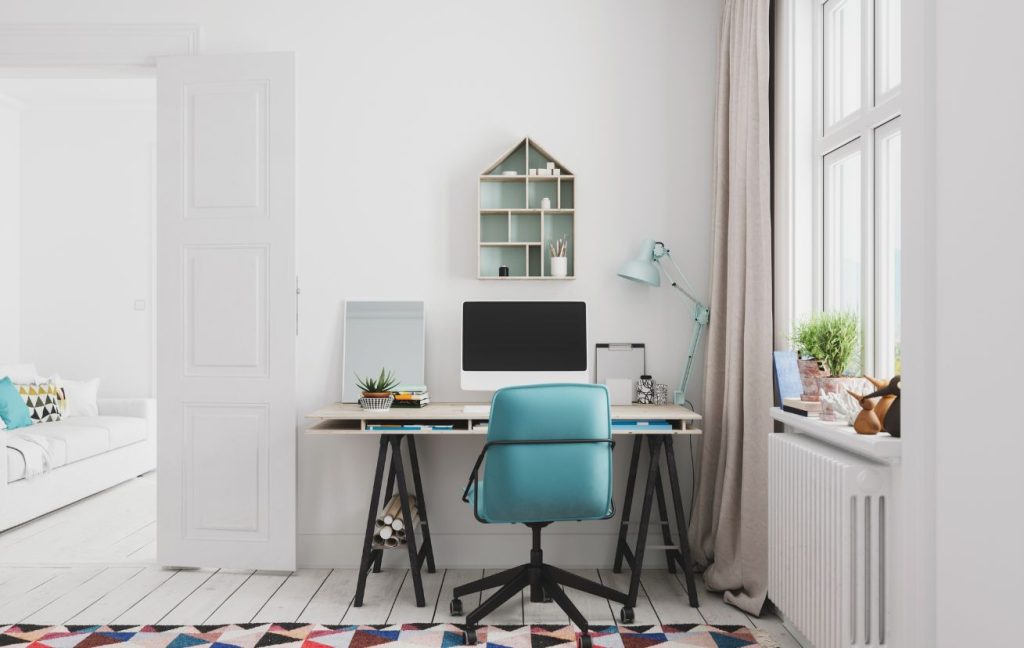
Cover Walls with Architectural Film
Architectural film, such as Bodaq, can be an excellent option for covering walls in small office design. This material can provide a cost-effective, durable, and aesthetically pleasing solution for improving the look and feel of a workspace.
One of the significant benefits of using architectural film is its ability to transform the appearance of walls without the need for costly and time-consuming renovations. With a wide range of designs and colors available, Bodaq film can help create a modern, professional, or unique look that aligns with the company’s brand and culture.
Furthermore, Bodaq film is incredibly durable and easy to maintain, making it an ideal choice for high-traffic areas in small offices. This material is resistant to scratches, UV rays, and moisture, which means it can withstand daily wear and tear and retain its quality for an extended period.
Finally, Bodaq film is an eco-friendly solution that can help small businesses reduce their environmental footprint. This material does not release harmful chemicals during installation or use, and it is recyclable, reducing the amount of waste that ends up in landfills.
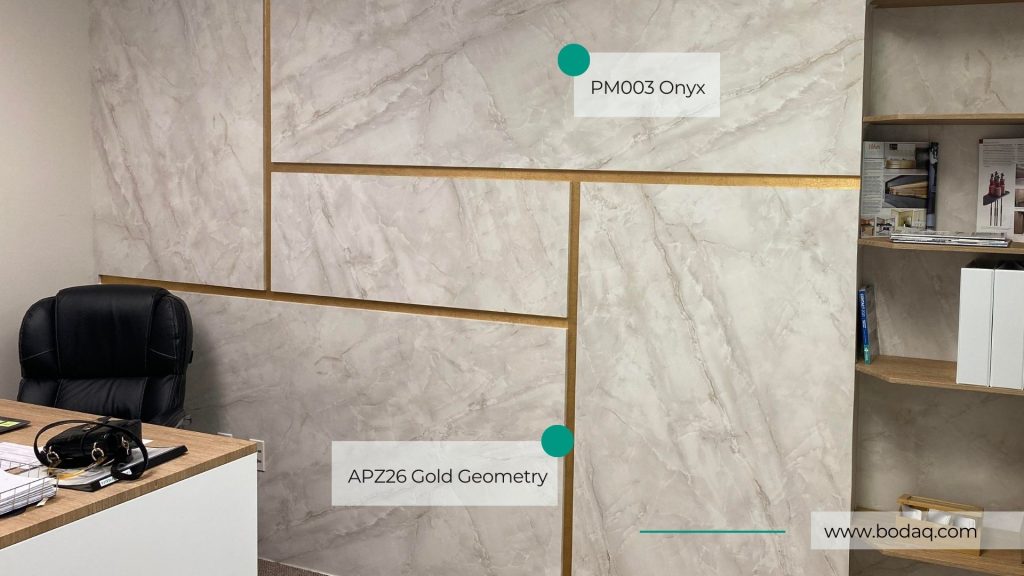
The wall panels are covered with PM003 Onyx and APZ26 Gold Geometry Bodaq Interior Film patterns.
Use mirrors
Mirrors can be a powerful tool in small office interior design. By strategically placing mirrors, you can create the illusion of more space and light, making the workspace feel larger and more welcoming. Here are some tips for using mirrors in small office interior design:
Firstly, consider the placement of mirrors. Mirrors should be placed in areas that reflect natural light or light fixtures, creating a brighter and more open space. Additionally, mirrors can be placed opposite windows or doors to bounce natural light into areas that may not receive as much.
Secondly, choose the right size and shape of mirrors. Large mirrors can create the illusion of more space, while smaller mirrors can be grouped together to create a unique and eye-catching design. The shape of the mirror can also impact the overall design aesthetic, with round or oval mirrors providing a softer and more organic look, while rectangular or square mirrors provide a more modern and streamlined appearance.
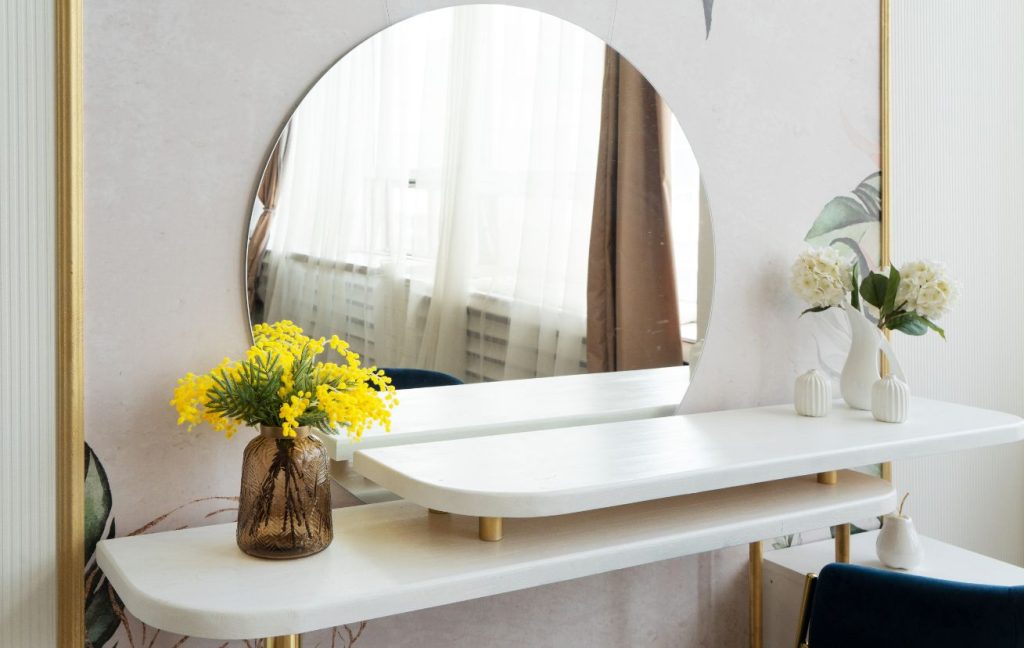
Use vertical space
Utilize the vertical space in your office by installing shelves, cabinets, or bookcases. This will help you maximize your storage while taking up less floor space.
To make the most of vertical space, consider installing shelving units, bookcases, or cabinets that extend from floor to ceiling. This can provide additional storage space for office supplies and equipment while keeping them organized and easily accessible.
Additionally, hanging artwork or decorative elements higher up on the walls can draw the eye upward and create the illusion of higher ceilings, making the space feel more open and airy. Using vertical space effectively can help small offices feel more functional and spacious, even with limited square footage.
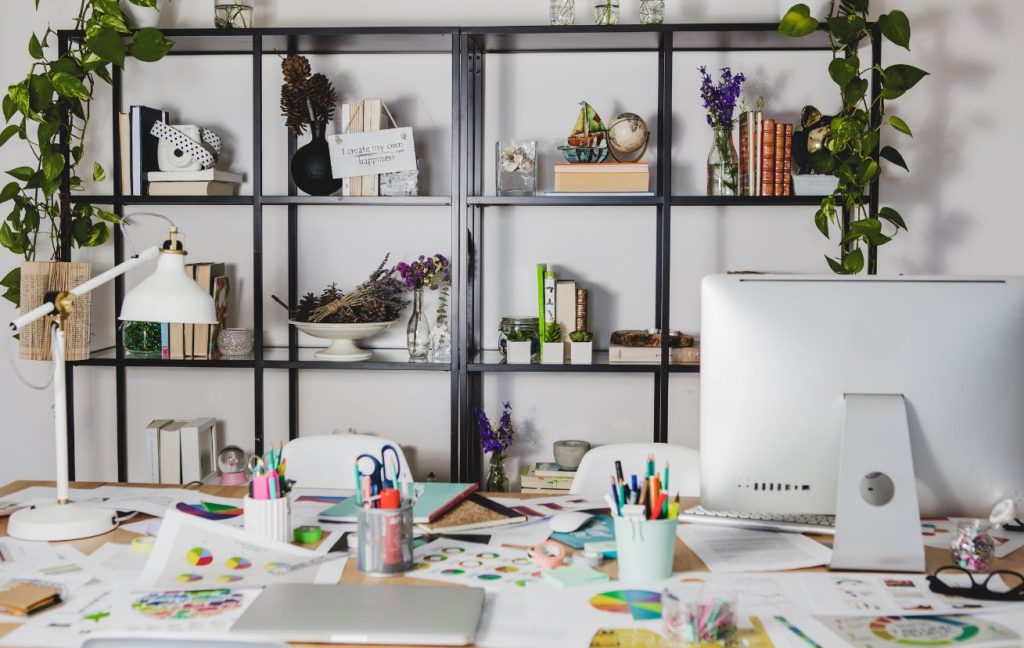
Get creative with storage
Look for creative storage solutions such as wall-mounted baskets or hanging organizers. These can help keep your office clutter-free while taking up minimal space.
Good option is to install floating shelves or modular shelving units, which can be customized to fit the specific needs of the office. This type of shelving is versatile and can be easily moved or reconfigured as needed.
Utilizing wall space is also important in small office interior design. Installing hooks, pegboards, or magnetic boards can help to keep items off the floor and within reach while adding a decorative element to the office.
Also, repurposing items, such as using file cabinets as side tables or stools, can also be a creative way to add additional storage while keeping with the overall aesthetic of the office.
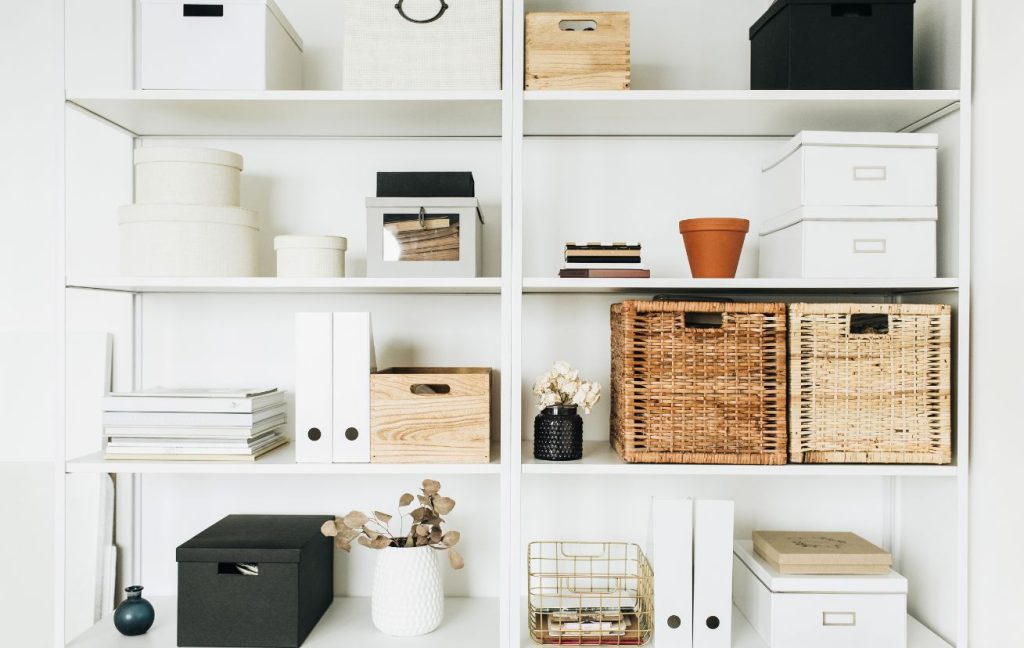
Add plants
Adding plants to a small office interior is an excellent way to bring nature into the workspace, create a more pleasant and inviting atmosphere, and improve air quality. Here are three of the best plants to add to small office interiors and why:
- Spider Plant: The spider plant is a low-maintenance plant that thrives in indirect sunlight and is perfect for small offices with limited natural light. It is also known for its air-purifying properties, removing toxins such as formaldehyde and benzene from the air.
- Peace Lily: The peace lily is a popular indoor plant that requires minimal care and adds a touch of elegance to any office space. It is known for its ability to remove toxins from the air and improve air quality, making it an ideal plant for small offices.
- Golden Pothos: The golden pothos is a fast-growing plant that is easy to care for and can thrive in low light conditions. It is also known for its ability to purify the air, removing toxins such as formaldehyde, benzene, and carbon monoxide.
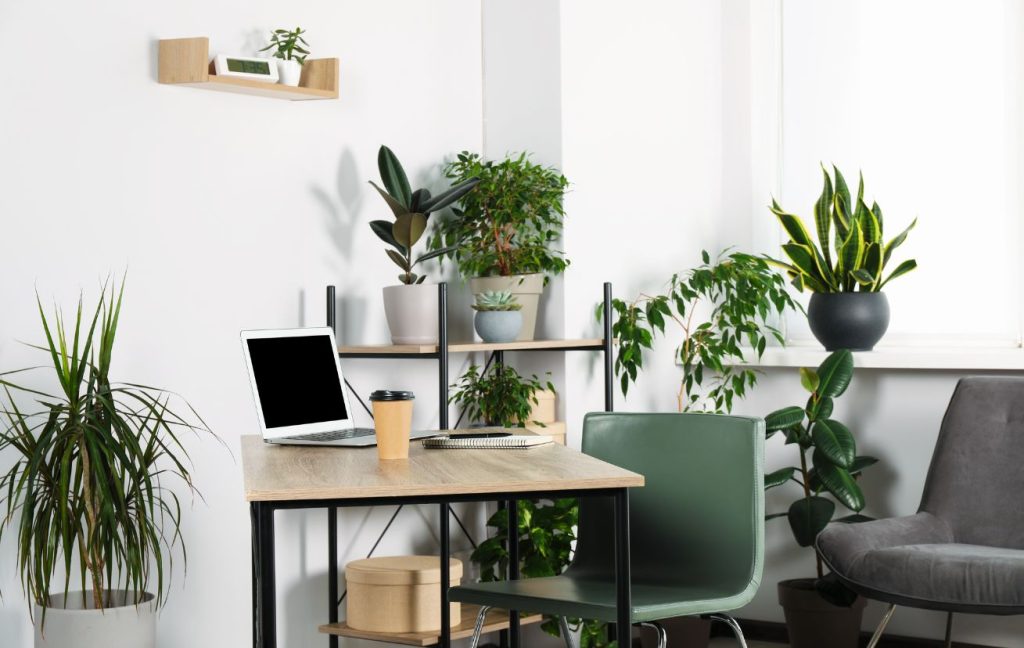
Choose the right lighting
Proper lighting is essential in a small space. Use a mix of ambient and task lighting to create a functional and comfortable workspace.
When choosing the right lighting for a small office, there are a few factors to consider to create a comfortable and productive work environment.
First, consider the type of work that will be done in the space and the amount of natural light available.
Next, choose lighting that is bright enough to avoid eye strain, but not too harsh or glaring. Select fixtures that are energy-efficient and have adjustable brightness or dimming options.
Also, consider the color temperature of the bulbs, as cooler temperatures can increase alertness and productivity, while warmer temperatures can promote relaxation.
Finally, make sure the lighting fixtures are positioned correctly to avoid shadows or glare on work surfaces.
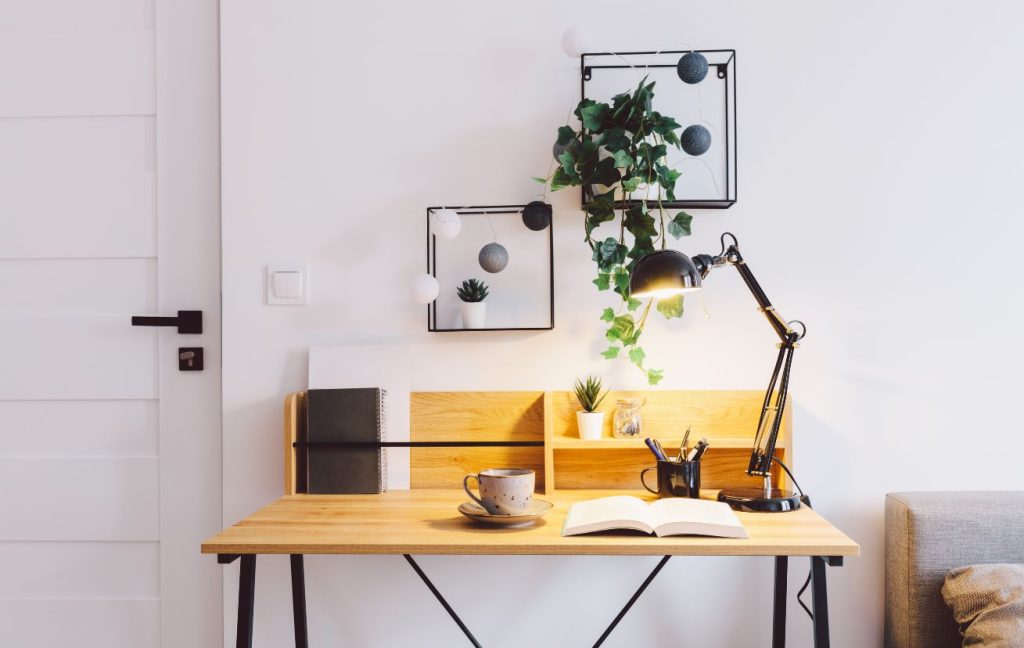
FAQ about Small Office Interior
- How do you design an office in a small space?
To design an office in a small space consider using multifunctional furniture, maximizing vertical space, choosing light colors, and incorporating storage solutions.
- How can I make my small office beautiful?
To make a small office beautiful consider adding plants, incorporating artwork or photographs, choosing stylish office accessories, using colorful accents, and ensuring the space is well-lit.
- How can I decorate my small office walls?
To decorate small office walls consider adding artwork or photographs, using wall shelves to display decorative items, incorporating a chalkboard or whiteboard for notes and reminders, and adding a functional wall organizer. And don’t forget about using Bodaq interior film for wall treatment.







